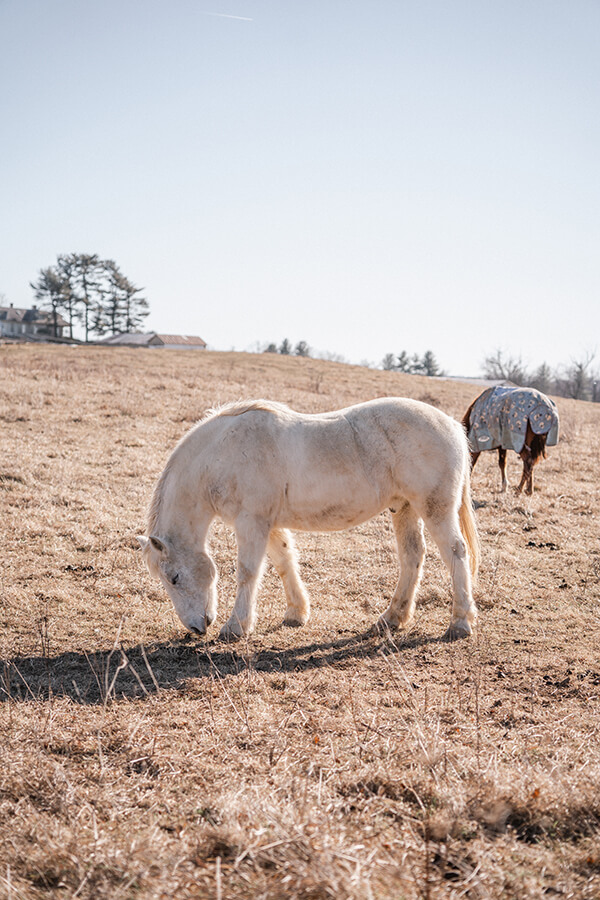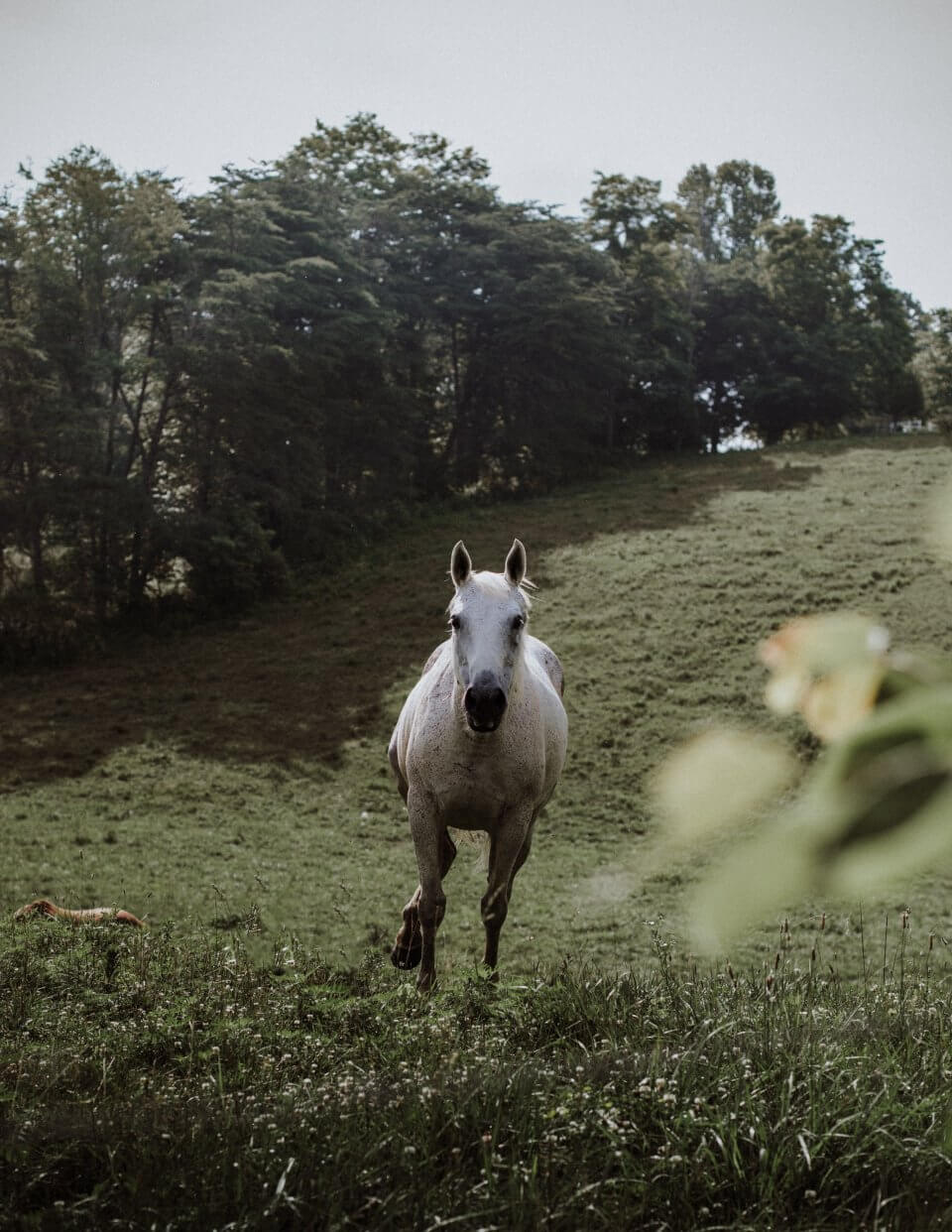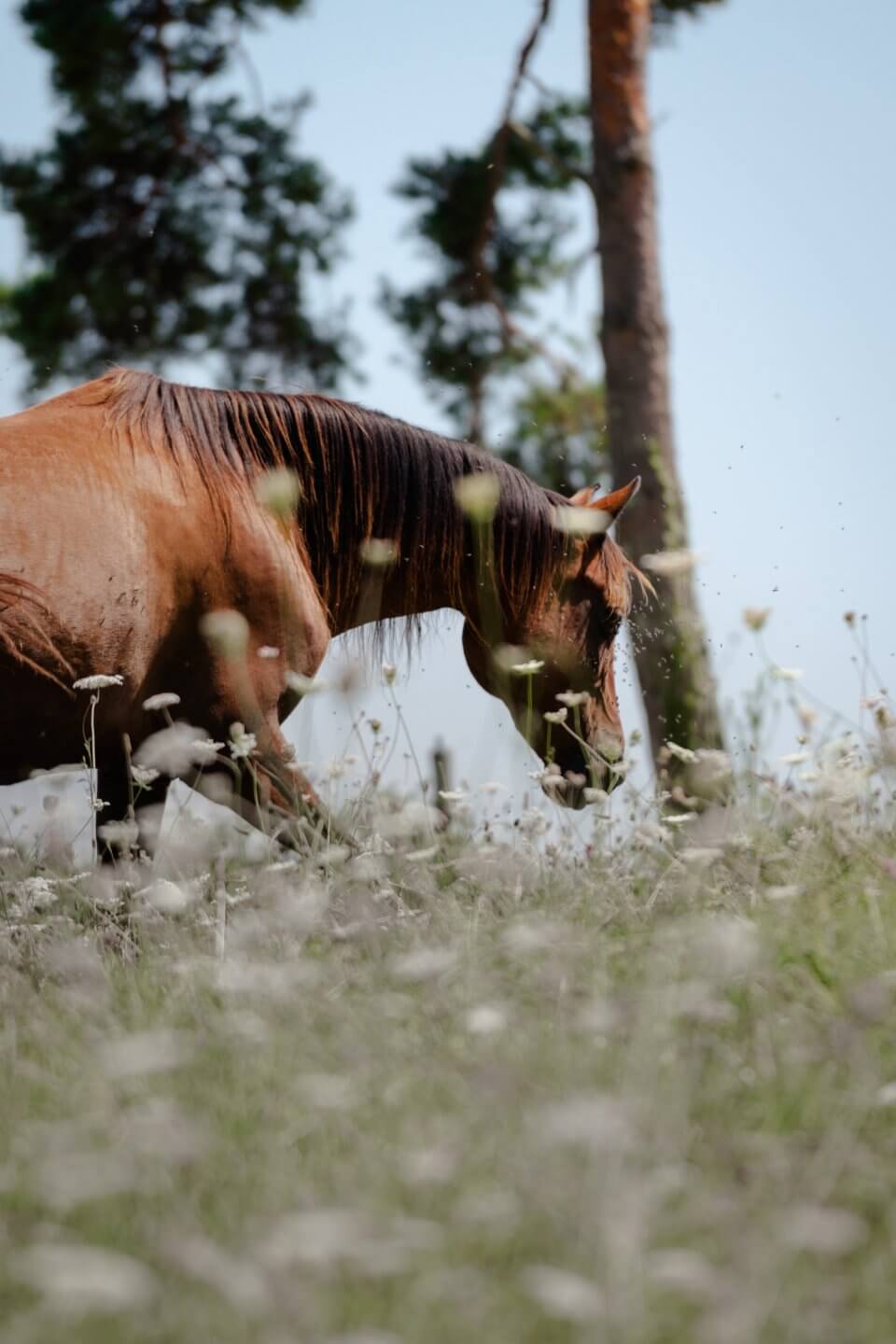
A horse safe pasture should be a high priority for every horse owner, especially since horses seem to be on a mission to destroy themselves. Horses spend a lot of time in their pastures, or all their time, if they are pasture kept, and keeping a pasture safe is much cheaper than paying vet bills to fix your horse from a pasture mishap. Even if you board, it’s worth knowing what a safe pasture looks like. It can help you decide where to board, or empower you to encourage safer pastures to your board manager.
Select Good Land
“Good” being subjective. What might be good for one situation might not work for another situation. But overall, it needs to be appropriate for your situation. It’s far easier to start with ideal land than it is to try to create good land. Removing trees or trying to create pasture land is going to be far more effort than just finding pasture land that is ready to go.

The bare minimum of pasture per horse is one acre of land. For good pasture land, one acre of land is thought to be enough space to allow grass to still grow while the horse continually mows it down. For poor pasture land, you may need way acreage to sustain one horse. More land is always ideal, but with any less, the horse(s) will quickly eat all the grass to nothing, leaving only weeds, and the bare earth remaining will become mud.
Horses also just need space to move around. Wild horses regularly travel eight or more miles a day over differing terrain, foraging, and moving away from pesky flies. Since domestic horses are contained, the lack of movement can effect their health. If they are in a big enough field, they can move around enough to get exercise, but when contained, may begin to show vices such as pacing or cribbing.
Big, open, grassy spaces, either level or rolling hills, with trees for shade (but no poisonous ones!) would be a horse’s dream. But not every place has abundant green space to make this a reality. Get as close as you can to the ideal, prioritizing the horse’s safety and well being.
Wooded properties, while nice for all sorts of reasons, are not ideal for horses. A few trees is great, but full woods is not. Horses cannot graze or forage in the woods, and every tree adds more potential hazards for a horse to get hurt on. Buying a property with the intention of clearing it is also not advisable unless you have deep pockets. It costs a lot of money to clear land, smooth it, and seed it, and a whole lot of time to wait for the grass to be established. People certainly have kept horses in wooded areas, but you won’t be making it easy for yourself.
I’m not going to be getting into pasture management techniques such as rotational grazing, or ongoing maintenance, as that would be a whole other article, but be assured that pastures do require upkeep and care.
Choose Safe Fencing Materials
Fencing should be strong enough to withstand a horse, tall enough to dissuade jumping, and durable enough that you don’t have to constantly spend time fixing it.
Just in case it needs to be said – barbed wire should never be an option. Horses do not understand they can’t rub up on or climb over barbed wire fence until it’s too late. I personally know of several horses that have had to be put down due to injuries from barbed wire, and my experience is not uncommon. Horses should never be in a field with barbed wire. Even just pulling the barbed wire down and putting up electric fence is an upgrade, and much safer for the horse.
The gold standard of fencing is oak three board fencing, painted either black or white. It’s attractive, long lasting, and holds up to the abuse of horses. But it is also expensive.
Another option is vinyl three board, which looks like traditional horse fencing at a distance, is durable, long lasting, and safe. It’s installed by laying out the strips of vinyl and tightening it against the posts. It’s also expensive.
A cheaper and very popular option is electric fencing. The thick band tape or the electro-rope are the most appropriate for horses, as they are highly visible. Thin, bare wire is not easy for horses to see and can slice their skin open.
I had a situation where I pastured my horse in a field with three board fence, but it had a thin, bare wire along the bottom to keep predators out of the field. The wire came loose, but was not visible and I unfortunately did not notice. My horse was running around the field and the wire caught her. She sliced her pastern and required an expensive vet treatment.
Electric fence can be used in combination with another type of fence. For instance, running a stand of (highly visible!) polywire electric fencing along the top of a wooden fence can keep horses from chewing on the top board, therefore making the fence last longer. Or if a fence is a weaker material, like no-climb mesh fence, the electric will keep horses from leaning on and eventually stretching out the fence.

Keep Up With the Maintenance
You’ve set up your beautiful farm, and it looks amazing. Congratulations! Now you can bask in the glory of your beautiful farm.
Until the board pops out. Okay, no problem, we’ll stick that back up. Then another board falls down. Okay, we’ll get that one. Then weeds start popping up. We’ll just mow those down. Another board down. And the gate fell off, for some reason… and more weeds, in spots the mower can’t get to. Oh, and more boards down.
Farms take a lot of maintenance. Everything is pristine and beautiful, but only for about a minute when your horse, who perhaps before thought was hilarious, is now ripping down boards like it’s his new hobby. Weeds grow way faster than the grass, and they are just everywhere.
Keeping up with the maintenance of a farm is hard. I see farms all the time that look a bit disheveled, so to speak, and I used to think the owners were just lazy, but now I get it. It’s annoying to constantly be keeping up with a farm. There’s always something that needs to be done.
If you really want to do it all yourself, prioritize. Mowing should be a priority, because weeds will overtake your pasture if they can. Keeping the fencing safe should be a priority, because you don’t want any escapes or injuries. After that, well, you do what you can.
Getting help is probably the best thing you can do. Sometimes you just need to pay someone to come help you. Hey, no one said this was going to be cheap! (or if they did, they lied to you.) I used to do everything myself, but I was exhausted and burned out. Paying someone to come help me every few weeks, just to get caught up, was one of the best things I did. My farm looks much better, and I don’t have the stress of a to-do list a mile long.
Sometimes, Things Just Happen
It’s important to set up a safe environment for your horse, as this is the best preventative against injuries. But, sometimes horses will find a way to injure themselves, despite our best efforts.
When I first got my horse Berry, I kept her in a large pasture with three board fencing. There was plenty of grass, shelter, and it seemed like an ideal environment. One day however, for unknown reasons, she got stuck on top of the fence. She either reared up and landed on the fence or tried to jump the fence, we will never know, but the fencing was a good 5 feet tall. It wasn’t tempting to jump, and it was so sturdy that it didn’t break when she landed on it. The fence had to be completely dismantled to get her off of it.
Luckily, she sustained no injuries from this incident. I don’t even know how, but other than a mild colic, she was fine.
We try hard to keep our horses safe, but sometimes these things happen anyway. We can’t prevent every injury, and some horses just seem to want to test every boundary and find dangerous things we didn’t even know existed. We just have to try our best, and there will be much less injury. Money spent building a safe pasture means less heartache and bills in the future.
My horses have been at my house for 11 years now, and we have been relatively injury free. Less money on vet bills means more fun money, and that’s the way I like it.
